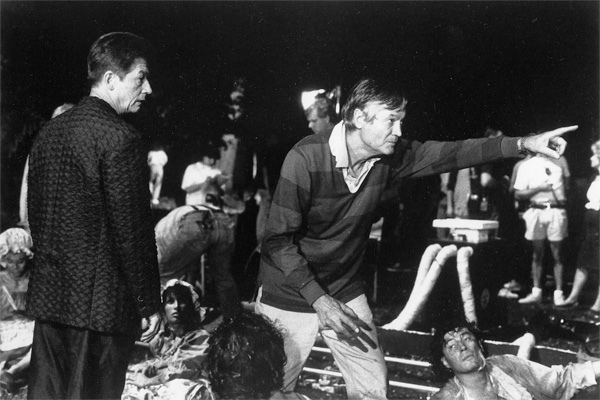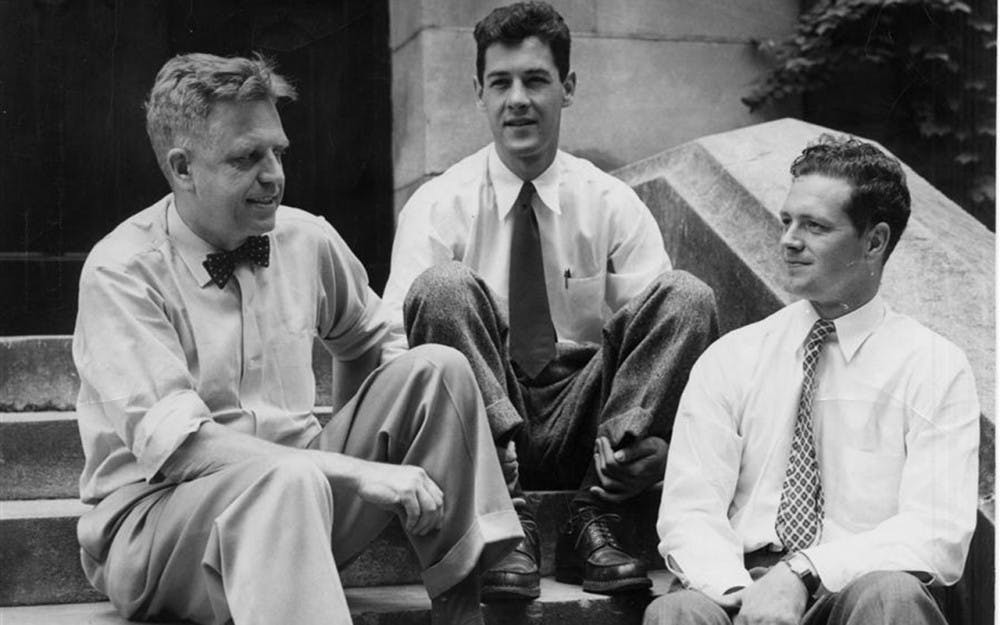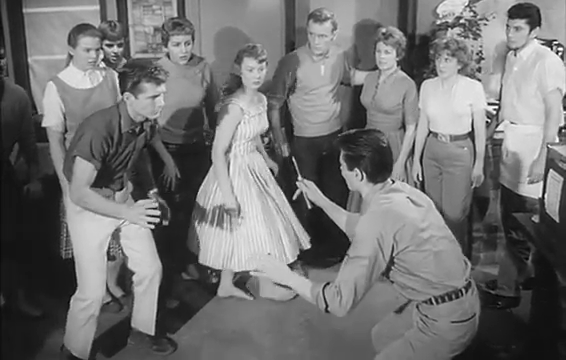Sunday Morning / December 19, 2021
Love is a myth,” she’d say, like the opening line of a Shakespearean play. “Don’t ever fall for love.” Why was an actress of radio, stage and screen — a woman who’d been reading and performing romantic comedies for 20+ years — so pessimistic about love? The devil, it seems, lies in the details of fairytales.
She worked all her life. Talk Radio KOLA’s “Father of the Bride” ran for seven consecutive seasons but was little more than a part time job away from the back-to-back riggers and leading roles she played at the Glendale Center Theater. During the scant 15-minute intermissions of her current performance, she’d sneak backstage to quietly rehearse the next play. Presenting the Oscar for Best Juvenile Performance Ruth Hale, curator of the iconic playhouse in Glendale California said, “Carol Dawne was our finest actress.” A mere 6 miles or 22-minute drive to the ‘Entertainment Capital of the World,’ Carol Dawne’s commute from radio to stage and screen was cutting hairpin turns to the Land of Dreams.
She signs with Roger Corman’s new motion picture company called The Filmgroup (today a subsidiary of Walt Disney Studios Motion Pictures) and on the occasion of her 18th birthday is emancipated from her parents who she financially supports. The Filmgroup won’t use unions, the first and only production company of its kind, pioneering a shooting technique called back-to-back film production for which Carol Dawne is well trained. For the first time in Hollywood history, “Little Shop of Horrors” with newcomer Jack Nicholson is shooting by day whilst Carol Dawne in “Our Teenage Love” is simultaneously shooting at night. Filmgroup is bypassing the big studio system, replacing old classics with contemporary storytelling, and creating a Hollywood Renaissance.
She approaches the corporate headquarters of the Walt Disney Studios in Burbank California. It’s a 51-acre metropolis where classics like Mary Poppins and the Mickey Mouse Club are filmed, but Disney has recently begun subletting its back-lot and sound stages to independent film makers. Just 18-years old, she’s directed to Stage #2 and takes her seat at the table read. It is the first time the entire cast is assembled and the first time they’ll see or read the entire script. Turning to the cast list, she observes that her character has the longest description, and it’s all she knows of the part she’ll soon portray on the silver screen.

Carol Dawne and Jon Lindon filming "Date Bait."
Freida Porter: The Ingénue. She's Slats' girl and considered vivacious, effervescent, the consummate friend. She’s an excellent dancer that rarely wears shoes; though appears to carry them with her wherever she goes in an oversized handbag that contains every conceivable item from a needle and thread to a packet of hairpins to a dime for an emergency phone call. Freida appears impetuous but is always prepared.
Her eyes wander from the page. It’s merely one of hundreds of scripts she’s seen or read over the years and she begins affixing hairpins of her own to the pages that bear her character’s name. Director Dale O’Ireland takes his seat at the head of the table and reads the synopsis aloud. “Scene: Pirates; A teenage hangout in Los Angeles. A scorn lover and heroin addict confront the ingénue over preferring another suitor before she elopes to Las Vegas.”
Carol Dawne is in the opening scene and realizes that the script originally titled “Our Teenage Love” has been renamed “Date Bait.”
Hollywoodland
He’s been called “The Pope of Pop Cinema” and pioneer of the independent film. He’s the youngest filmmaker to have a retrospective at the Cinémathèque Française, British Film Institute and Museum of Modern Art. In 2009, he was ironically awarded the Academy Award for "his rich engendering of films and filmmakers" and honored for debunking classic Hollywood cinema and creating the first independent studio in Hollywood.

Roger Corman circa 1960
Five major studios controlled classic Hollywood cinema from its first film in 1910 called “In Old Hollywood.” RKO Pictures, 20th Century Fox, Paramount, Warner and MGM were all capturing the power of live theatre on the cinematic screen. Westerns, comedy, musicals and cartoons were the order of the day until World War II set in leading to romance, war movies and fairytales. However, the Big Five’s infrastructure of magnificent sets and glamorous movie stars couldn’t persuade the new Beat Generation or prevent their Counterculture Revolution.
Civil Rights, Vietnam, psychedelic drugs and free love were hot topics in 1960 and the documentary film “Corman’s World: Exploits of a Hollywood Rebel” examines how Roger Corman mentored the first tranche of iconic filmmakers like Francis Ford Coppola and Martin Scorsese by bringing their unique brand of storytelling to the silver screen. He even turned the All-American Boy into an iconic filmmaker when he pulled Ron Howard behind the camera in his directorial debut “Grand Theft Auto.”
He shed light on racial violence and school integration when he cast William Shatner in “The Intruder.” He explored LSD and psychedelics with Dennis Hopper in “The Trip.” He even put Peter Bogdanovich behind the camera, and Peter Fonda in front of it, to reconstruct the very phenomenon of counterculture. When a small gang of Harley Davidson motorcycles ride contrary to the California coastline, they effectively question, challenge and change the world in “The Wild Angels.”
At a day and time when Doris Day reigned, Roger Corman effectively ousted the old guard of classic Hollywood cinema and ushered in a period known as New Hollywood. How a rag tag group of rebels at The Filmgroup were able to sidestep the unions, challenge the studio system and create relevant storytelling all begin in 1959 with newcomers Jack Nicholson and Carol Dawne in the double feature “Little Shop of Horrors” and “Date Bait.” Hollywood’s transition from classic idealism to new wave realism pricked our imagination and provoked our appetites for more realistic stories of love.
The Sexual Revolution
The Sexual Revolution of 1960 was a social movement that questioned traditional codes of conduct from every corner of society including medicine, psychology, art and science. In fact, Time Magazine’s “Man of the Year” in 1953 was being celebrated for a breakthrough discovery in human sexuality.

The Kinsey Institute circa 1960
Studying the mating rituals of gall wasps at Harvard University, Dr. Alfred Kinsey noticed the critters had a quirk. If 0 represents exclusively heterosexual behavior, and 6 exclusively homosexual behavior, the now famous Kinsey Scale observed that the vast majority of his 100,000 gall wasps appeared to be living somewhere in the margins of bisexuality.
As a zoologist at Indiana University, Kinsey turned his microscope on humans. Surveys of thousands upon thousands of men and women led to the Sexual Behavior in the Human Male in 1948 and the Sexual Behavior in the Human Female in 1953 which combined to reveal that insects and humans shared some eerily similar mating rituals.
Kinsey’s purely scientific approach inspired the Masters and Johnson research team at Washington University in St. Louis to create an actual laboratory, and to record the first data on the anatomy and physiology of human sexuality.
It was based on the direct observation of 382 women and 312 men who in different combinations performed 10,000 complete cycles of sexual response. Their discovery of a predictable pattern of sexuality included excitement, plateau, orgasm and resolution and put them on the cover of Time Magazine in 1970.
Their magnum opus Human Sexual Response was published in 1966 and became the predominant resource for the medical community on sex. Myths surrounding promiscuity, adultery, masturbation, postpartum depression, menopause and the midlife crisis were all debunked as behavioral disorders by the Diagnostic and Statistical Manual of Mental Disorders and reintroduced as natural occurrences in the primordial life cycle.
The Sexual Revolution of 1960 represented the renaissance of human sexuality: where art and science combined where religion had failed — to critically examine the human sexual experience. Carl Jung, the father of analytical psychology, described this period as a natural cycle whereupon a rigid culture, unable to contain the demands for individual freedom, exonerates itself from social constraint by creating a new and vibrant counterculture. And New Hollywood — with a penchant for reality, subtext and irresolution — was already re-writing the greatest story on earth.
The Break of Dawne
After nine months of shooting, "Date Bait" went into national release in December 1959. A strategic box office and awards season, it was also the first studio film to examine drug addiction, juvenile delinquency and teenage sex in the mainstream media. Moreover, it was Hollywood’s maiden voyage into the vortex of the Counterculture Revolution.
Variety Magazine reviews the trades and writes, “O’Ireland daringly takes on drugs, addiction and sex in Filmgroup’s new avant garde approach to film-making. Plot and point of view are informed less by dialogue than metaphor. Watch the fight scene with Hollywood heartthrob Gary Clarke or look deep into Freida’s bag for the truth and nature of love. For Dale O’Ireland, the devil lies in what we see — and often don’t see — of love.”

Carol Dawne, Gary Clarke and Dick Gering filming "Date Bait."
She gave up her career for a family, is the way she explained her exit from acting, and yet shortly following the release of her second full-length feature film life was imitating art. Like Freida, who’d eloped to Las Vegas in the movies, Carol Dawne had become a cliché. An impetuous romance of her own produced a son she'd have to raise alone.
New Day Dawne
From the playful Kay Banks in KOLA’s “Father of the Bride” to the stage, where Cinderella found her prince at the Pantages, Carol Dawne wore the many colors of a woman well. “Always be the leading lady in your own life,” Audrey Hepburn once said, elucidating upon the very line that made her famous. In the Academy Award winning classic “My Fair Lady” a flower girl observes, “The difference between a woman and a lady is not how she acts. It’s how she’s treated.”
As I approach the 25th Anniversary of my own Commitment Ceremony, I realize now that I’m here less because of me or even him but because of her. “Find a friend,” my Mother always said, demystifying the smoke and mirrors of romance. After mistaking lust and passion for love in her youth, she trained me in a way only an actress can. “Love, dear Drew, is about point of view. It’s not just something you feel. It’s something that you do.” It was her greatest line, perhaps her most memorable role, and the grandest part she ever played.
In Memoriam
Carol Dawn Gowing
1940-1992








